External links
- (in Italian) Luigi's profile from Gazzetta dello Sport
| Personal information | |||
|---|---|---|---|
| Full name | Luigi Martinelli | ||
| Date of birth | September 2, 1970 | ||
| Place of birth | Chiari, Italy | ||
| Height | 1.82 m (5 ft 11+1⁄2 in) | ||
| Position(s) | Defender | ||
| Youth career | |||
| Barletta | |||
| Senior career* | |||
| Years | Team | Apps | (Gls) |
| 1990–1994 | Barletta | 79 | (2) |
| 1994–1995 | Fiorenzuola | 16 | (0) |
| 1995–1997 | Trapani | 47 | (0) |
| 1997–2001 | Alzano Virescit | 104 | (2) |
| 2000–2001 | Chievo | 6 | (0) |
| 2001–2003 | Siena | 46 | (0) |
| 2003–2005 | Ascoli | 32 | (0) |
| 2005–2007 | Torino | 26 | (1) |
| *Club domestic league appearances and goals, correct as of 1 September 2007 | |||
Luigi Martinelli (born September 2, 1970 in Chiari) is an Italian former footballer who played for Serie C1 team Hellas Verona as a defender.
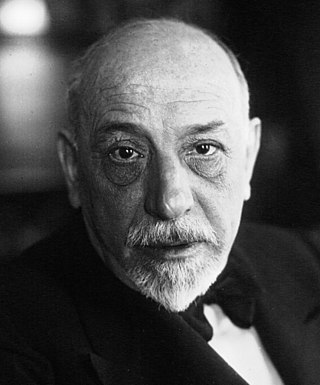
Luigi Pirandello was an Italian dramatist, novelist, poet, and short story writer whose greatest contributions were his plays. He was awarded the 1934 Nobel Prize in Literature "for his bold and ingenious revival of dramatic and scenic art". Pirandello's works include novels, hundreds of short stories, and about 40 plays, some of which are written in Sicilian. Pirandello's tragic farces are often seen as forerunners of the Theatre of the Absurd.

Luigi is a character created by Japanese video game designer Shigeru Miyamoto. Part of Nintendo's Mario franchise, he is a kind-hearted, cowardly Italian plumber, and the younger fraternal twin brother and sidekick of Mario. Like his brother, Luigi's distinctive characteristics include his large nose and mustache, overalls, green hat, and high-pitched, exaggerated Italian accent.

Luigi Galvani was an Italian physician, physicist, biologist and philosopher, who studied animal electricity. In 1780, using a frog, he discovered that the muscles of dead frogs' legs twitched when struck by an electrical spark. This was an early study of bioelectricity, following experiments by John Walsh and Hugh Williamson.

Ridolfo Luigi Boccherini was an Italian composer and cellist of the Classical era whose music retained a courtly and galante style even while he matured somewhat apart from the major European musical centers. He is best known for a minuet from his String Quintet in E, Op. 11, No. 5, and the Cello Concerto in B flat major. The latter work was long known in the heavily altered version by German cellist and prolific arranger Friedrich Grützmacher, but has recently been restored to its original version.

Prince Luigi Amedeo, Duke of the Abruzzi, was an Italian mountaineer and explorer, briefly Infante of Spain as son of Amadeo I of Spain, member of the royal House of Savoy and cousin of the Italian King Victor Emmanuel III. He is known for his Arctic explorations and for his mountaineering expeditions, particularly to Mount Saint Elias and K2. He also served as an Italian admiral during World War I. He created Villaggio Duca degli Abruzzi in Italian Somalia during his last years of life.

Pier Luigi Nervi was an Italian engineer and architect. He studied at the University of Bologna graduating in 1913. Nervi taught as a professor of engineering at Rome University from 1946 to 1961 and is known worldwide as a structural engineer and architect and for his innovative use of reinforced concrete, especially with numerous notable thin shell structures worldwide.

Luigi Numa Lorenzo Einaudi was an Italian politician and economist. He served as the president of Italy from 1948 to 1955 and is considered one of the founding fathers of the Italian Republic.
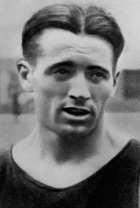
Luigi Beccali was the first Italian to win an Olympic gold medal in running, in the 1500 metres at the 1932 Summer Olympics, and the first Italian to win a European Championship title in athletics.

Luigi Carlo Filippo Russolo was an Italian Futurist painter, composer, builder of experimental musical instruments, and the author of the manifesto The Art of Noises (1913). Russolo completed his secondary education at Seminary of Portograuro in 1901, after which he moved to Milan and began gaining interest in the arts. He is often regarded as one of the first noise music experimental composers with his performances of noise music concerts in 1913–14 and then again after World War I, notably in Paris in 1921. He designed and constructed a number of noise-generating devices called Intonarumori.
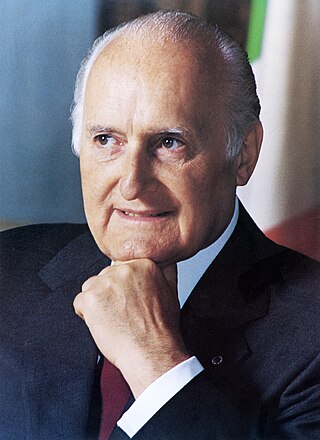
Oscar Luigi Scalfaro was the president of Italy from 1992 to 1999. A member of Christian Democracy (DC), he became an independent politician after the DC's dissolution in 1992, and was close to the centre-left Democratic Party when it was founded in 2007.

The Stadio Comunale Luigi Ferraris, also known as the Marassi from the name of the neighbourhood where it is located, is a multi-use stadium in Genoa, Italy. The home of Genoa C.F.C. and U.C. Sampdoria football clubs, it opened in 1911 and is the oldest stadium still in use for football and other sports in Italy. Aside from football, the stadium has hosted meetings of rugby in the Italian national rugby team and, more rarely, some concerts.
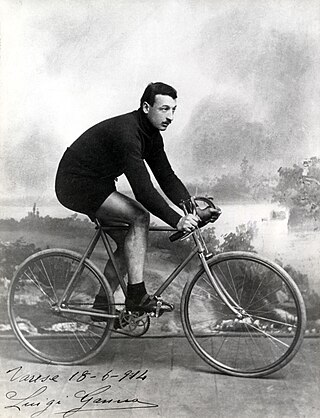
Luigi Ganna was an Italian professional road racing cyclist. He was the overall winner of the first Giro d'Italia, held in 1909, as well as the first Italian winner of the classic Milan–San Remo earlier that year. Further highlights in his career were his fifth place in the 1908 Tour de France and several podium places in Italian classic races. In 1908, he set a new Italian hour record, which he held for six years.

Italy competed at the 1936 Summer Olympics in Berlin, Germany. 244 competitors, 228 men and 16 women, took part in 99 events in 17 sports.

Italy was the host nation for the 1960 Summer Olympics in Rome. It was the first time that the nation had hosted the Summer Games, and the second time overall. It also hosted the 1960 Summer Paralympics in Rome – the inaugural Paralympic Games.

The "Luigi Pigorini" National Museum of Prehistory and Ethnography was a public and research museum located in Rome, Italy. Established in 1875 and opened in 1876 by Luigi Pigorini, from 2016, its collections became part of the newly instituted Museo delle civiltà, currently directed by Andrea Viliani. The museum was housed in the Collegio Romano from 1875 to 1923.
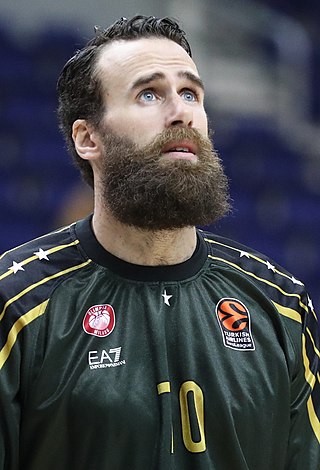
Luigi "Gigi" Datome is an Italian former professional basketball player. Standing at 2.03 m, he played at the small forward and power forward positions. Datome was an All-EuroLeague Second Team selection in 2016.
Italian submarine Luigi Torelli was a Marconi-class submarine of the Italian navy during World War II. The vessel operated in the Atlantic from September 1940 until mid-1943, then was sent to the Far East. After Italy's surrender in 1943, the Luigi Torelli was taken over by Nazi Germany's Kriegsmarine, then, in the waning months of the war, the Japanese Imperial Navy. It was one of only two ships to serve in all three major Axis navies, the other being the Italian submarine Comandante Cappellini.
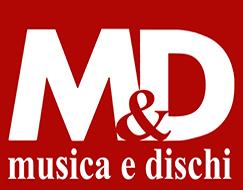
Musica e dischi was the oldest and longest-running music industry publication in Italy.
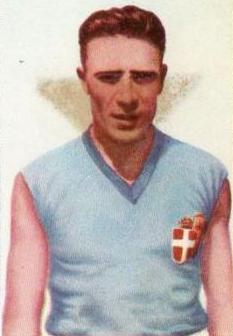
Luigi Facelli was an Italian hurdler. He was born in Acqui Terme, in Piedmont, and died in Milan at the age of 92.
Luigi Ferraro was an officer of the Royal Italian Navy and pioneer of Italian submarine warfare, most notable for his service with the commando frogman unit Decima Flottiglia MAS. In 1943 in Turkey he attacked four ships carrying chromium ore. He was decorated with the gold medal for military valor for having sunk three enemy ships alone.